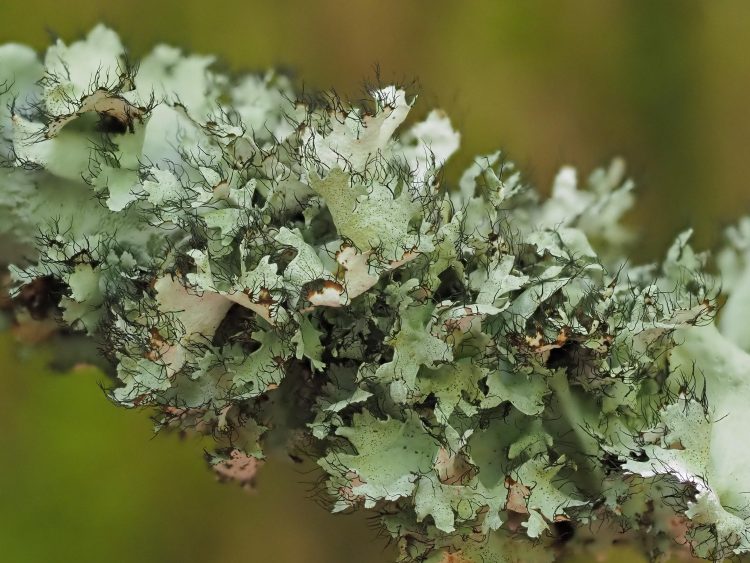Welcome fellow explorers of the wild and wacky world of biodiversity! Today, we are embarking on a journey through the tangled branches and twisted roots of cladograms and trees. No, we’re not talking about your average walk in the park – we’re diving deep into the evolutionary history of all living creatures, from the majestic blue whale to the humble tardigrade. So grab your binoculars, pack your sense of humor, and get ready to unravel the secrets of life on Earth! Let’s branch out and leaf no stone unturned in our quest to uncover the interconnected web of life.
Understanding Biodiversity
Biodiversity is more than just a big word—it’s like the coolest party in town where every species is invited! Imagine walking into a room filled with funky fungi, sassy snakes, dazzling dolphins, and everything in between. That’s biodiversity for you!
One of the perks of being part of the biodiversity club is the never-ending buffet of interactions between different species. It’s like a potluck where everyone brings something unique to the table. From the bees pollinating flowers to the dung beetles recycling poop, each species has a role to play in keeping the party going!
But here’s the twist—biodiversity isn’t just about the big, flashy species. Even the tiny microbes and humble earthworms are VIPs in this cosmic dance of life. They may not have a fan club like the pandas or the tigers, but they’re the unsung heroes who keep the party pumping behind the scenes.
- In biodiversity, variety is the spice of life!
- Every species plays a unique role in the ecosystem.
- From the tiniest insects to the mighty elephants, everyone’s invited to the party!
Introduction to Cladograms
Welcome to the exciting world of cladograms! If you’ve ever looked at a family tree and thought, “Hmm, that’s too simple,” then you’re in luck. Cladograms take family trees to a whole new level, depicting the evolutionary relationships between organisms in a visually stimulating way.
When you see a cladogram, you might be tempted to scratch your head in confusion. Fear not! We’ll break it down for you in a way that even a monkey could understand (see what I did there?). Essentially, cladograms show how different organisms are related based on shared characteristics. It’s like playing a game of “Guess Who?” but with way cooler consequences.
Think of a cladogram as a genetic roadmap, guiding you through the twists and turns of evolutionary history. Each branch represents a common ancestor, and each node signifies a point where new characteristics emerged. It’s like a science-themed choose-your-own-adventure book, but instead of unicorns and rainbows, you get mutations and natural selection. Exciting stuff, right?
So buckle up, dear reader, as we embark on a journey through the wondrous world of cladograms. By the time we’re done, you’ll be a cladogram connoisseur, impressing all your friends with your newfound knowledge of evolutionary relationships. Who knew science could be so fun?

Interpreting Cladograms
So you’ve stumbled upon a mysterious cladogram and you’re scratching your head trying to make sense of it all. Don’t worry, we’ve all been there! Here are a few tips to help you decode those wacky branches and nodes:
- Identify the most recent common ancestor – think of this as the family reunion where all the species come together for a wild party.
- Look for shared derived traits – these are like fashion trends that all the cool kids are rocking. If multiple species have the same trait, they probably got it from their common ancestor.
- Don’t get too caught up in the labels – just because a group is called “monophyletic” doesn’t mean they all wear matching outfits.
Remember, cladograms are like a puzzle that you’re trying to piece together. Sometimes you might get it wrong, but that’s all part of the fun! So grab your magnifying glass and detective hat, and get ready to crack the code of the cladogram!

Creating Phylogenetic Trees
So you’ve decided to embark on the wild journey of . Whether you’re a seasoned pro or a newbie to the world of evolutionary relationships, buckle up because things are about to get phylo-tastic!
First things first, gather your data like a squirrel hoarding nuts for winter. Collect sequences from various species like you’re the DNA version of Indiana Jones. Remember, the more diverse your samples, the more robust your tree will be. It’s all about creating a genetic melting pot!
Next, it’s time to whip out your trusty phylogenetic software like a wizard casting spells. Let that program work its magic as it crunches numbers and spits out a tree that would make even Mother Nature proud. Embrace the chaos of algorithms and matrices like a boss!
Finally, once your tree is complete, it’s time to marvel at the beauty of evolution. Admire the branches and twigs that represent millions of years of genetic changes. Remember, every leaf on that tree has a story to tell. And hey, if all else fails, just throw in a few dinosaurs for good measure. Life finds a way, after all!

Analyzing Evolutionary Relationships
In the grand circle of life, the study of evolutionary relationships is like a never-ending soap opera full of twists, turns, and unexpected plot twists. It’s like a never-ending season of “Survivor,” where only the fittest survive and the rest get voted off the island of genetic diversity.
At the heart of is the age-old question: who is related to whom? It’s like playing a game of genetic Clue, where we’re trying to figure out if Professor Plum (chimpanzees) did it with the DNA in the library (mitochondria) or if it was Ms. White (humans) in the greenhouse (evolutionary tree).
One of the keys to unlocking the secrets of evolutionary relationships is comparing traits among different species. We look at things like morphology, behavior, and genetics to piece together the puzzle of who evolved from whom. It’s like trying to solve a genetic Rubik’s Cube – except instead of colors, we’re matching up genes and traits to build the ultimate family tree of life.
So next time you’re feeling lost in the maze of evolutionary relationships, just remember: we’re all just distant cousins trying to make sense of our shared genetic past. Let’s embrace the chaos, the complexity, and the occasional surprise DNA match that makes studying evolutionary relationships the ultimate genetic reality show.
Importance of Biodiversity Conservation
Biodiversity conservation is crucial for maintaining a healthy planet, but let’s face it – who wants to live in a world without quirky animals like the axolotl or the blobfish? We need biodiversity to keep our ecosystem diverse, vibrant, and full of surprises.
Imagine a world where every tree looked the same, every bird sang the same song, and every bug buzzed in perfect harmony. Yawn! Biodiversity gives us variety, excitement, and endless opportunities to discover new species that we never knew existed.
Without biodiversity, we risk losing valuable medicines, resources, and even potential solutions to climate change. Who knows, maybe the key to saving the planet lies in the unassuming moss growing in your backyard! By protecting biodiversity, we’re not just saving cute animals – we’re also safeguarding our future.
So let’s raise our glasses (filled with sustainably sourced water, of course) to biodiversity conservation! Let’s protect the weird, the wonderful, and the downright wacky creatures that make our world a better place. Because let’s be real – a world without biodiversity would be as dull as watching paint dry or waiting for a sloth to cross the road.
Applications of Cladograms in Research
Cladograms may seem like just a fancy tree diagram, but they actually have some pretty cool applications in research. Here are a few ways scientists are using cladograms to make groundbreaking discoveries:
- Evolutionary Studies: By analyzing the branching patterns of different species on a cladogram, researchers can piece together the evolutionary history of life on Earth. It’s like playing a game of genetic detective, trying to figure out who’s related to who and how they’re all connected.
- Biodiversity Conservation: Cladograms can help scientists identify species that are closely related and share common ancestors. This information is crucial for conservation efforts, as it allows researchers to pinpoint which species are most at risk and need protection.
- Phylogenetic Analysis: Cladograms are used to study the relationships between different groups of organisms based on their shared characteristics. This can provide valuable insights into the origins of species and how they have evolved over time. It’s like creating a family tree for every living thing on the planet!
So next time you see a cladogram, remember that it’s more than just a pretty picture – it’s a powerful tool that’s helping scientists unlock the mysteries of the natural world.
FAQs
What is a cladogram and how is it different from a tree?
A cladogram is like a family tree for species, showing their evolutionary relationships based on shared characteristics. So basically, it’s like Facebook for animals, but with a bit less drama.
How can cladograms help scientists understand biodiversity?
Well, imagine trying to figure out who your long-lost cousin is without any family photos. Cladograms help scientists see how different species are related and how they’ve evolved over time, giving us a clearer picture of biodiversity.
What are some common misconceptions about cladograms and trees?
Some people think that cladograms are just fancy doodles, but they actually represent years of scientific research and data analysis. And no, trees don’t actually have branches made of DNA – that’s just a metaphor, folks.
How do scientists go about creating a cladogram?
It’s like playing a giant game of “Guess Who?” but with genes and fossils. Scientists compare physical traits and genetic information to piece together the evolutionary history of different species, creating a visual representation of their relationships.
Why is it important to study biodiversity through cladograms and trees?
Understanding biodiversity helps us appreciate the beauty and complexity of nature, and can also lead to breakthroughs in medicine, conservation, and even technology. So next time you’re admiring a cute animal video, just remember – there’s a whole cladogram of evolution behind it!
—
And there you have it, folks!
So next time you’re out exploring the wonderful world of biodiversity, remember to take a closer look at those cladograms and trees. They may just hold the key to unlocking the secrets of evolution and the interconnectedness of all living things. Who knew that a simple diagram could hold so much power and intrigue? Keep exploring, keep learning, and never stop marveling at the wonders of nature. Happy adventuring!






